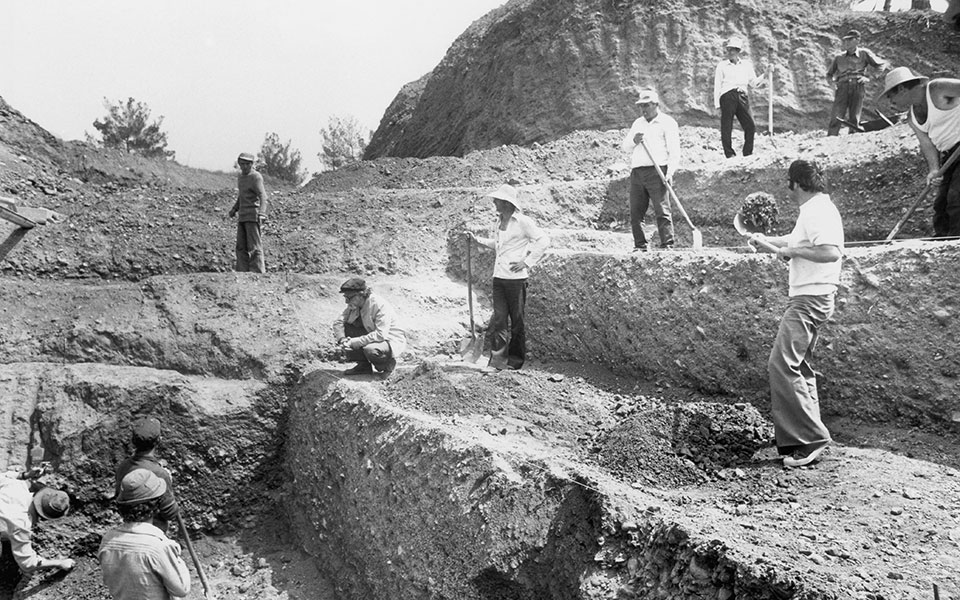Among the great subjects of Greek archaeology, Philip II’s Macedonia (359-336 BC) is one that might seem familiar, but, on close inspection, consistently proves to have something new, or old, to learn about, wonder at and gain new perspective on, and the best place to begin is at Vergina. One should make a beeline for this diminutive spot on the road map (approximately one hour southwest of Thessaloniki), as it’s here that you’ll find one of the best-presented, most memorable archaeological museums in Greece: the Museum of the Royal Tombs at Aigai.
Tucked into a corner between the broad Aliakmon River and the foothills of the Pieria mountains at the southern edge of the bountiful plain that extends westward from the Thermaic Gulf, Vergina’s pastoral, deceptively peaceful setting belies the palpable excitement of its steady stream of visitors, the material splendor of the museum’s artifacts and the furious scholarly debate that seems constantly to swirl about this historical site. Vergina occupies a central position on the archaeological landscape of Greece, just as, some 2,500 years ago, it ranked as an elite royal center within the heartland of ancient Macedonia.

© Konstantinos Tsakalidis
Experiencing Vergina
A visit to the museum at Vergina is a feast for the eyes and the mind. Located amid the relatively new (post-1922) village’s maze-like streets lined with tidy houses, its inconspicuous gateway and wrought-iron fence enclose an immaculate archaeological park whose atmosphere, one feels, even upon first entering this space, is steeped in noble privilege. Someone very important clearly must have been buried here. Curiosity builds as the large green tumulus, neatly covered with grass and shrubs, is spied ahead. Crossing the open courtyard after the ticket office, the visitor, drawn inexorably toward the mysterious mound, accesses the museum through a long “dromos” or walkway that slices into the hill, similar to the approach to the Treasury of Atreus at Mycenae or other monumental underground tombs.
On entering the museum proper, one is immediately transported into another world, reminiscent (appropriately) of the Underworld, where a reverent gloom fills the interior and the eye is drawn to impressively exhibited artifacts and Greek-style architecture sharply defined by bright spotlights. The “mound” presently covering the museum is in fact a modern roof (invisible in the dark) that protects the site and offers a sense (both externally and internally) of the original tumulus.
The tour of the museum follows a circular, clockwise flow, beginning with painted, inscribed or relief-carved grave steles that once marked the millennia-old burials contained within the Great Tumulus itself or the more than 300 other, smaller tumuli previously scattered all around it. This extensive necropolis, dating from the Iron Age (post-1000 BC) through the Hellenistic era, was a prominent indicator on the landscape of two ancient settlements (pre-Classical and Classical-Hellenistic) that had successively thrived in this area, until Aigai was destroyed and ultimately abandoned, following the Macedonians’ defeat by the Romans at the Battle of Pydna in 168 BC.

© Hellenic Ministry of Culture & Sports, Ephorate of Antiquities of Imathia.

© Hellenic Ministry of Culture & Sports, Ephorate of Antiquities of Imathia.
The necropolis actually represents only one part of the Vergina archaeological site, lying on the western side of a large urban center heavily fortified with walls and towers in the late 4th or early 3rd century BC (now buried, no longer visible). The city’s still-only-partly excavated remains also feature an acropolis, at the high southern end and, extending northward down the slope, a large palace and associated theater, religious sanctuaries, public buildings and private houses.
Cultural Treasures
Today, within the darkness of the Aigai museum, the exhibition’s diverse displays and dramatic presentation illuminate, literally and figuratively, the resplendent life and death of elite ancient Macedonians. The main attractions, augmented by archival excavation photographs, information panels and detailed cut-away 3-D models of the Great Tumulus, are the series of monumental tombs, with standing columns (Tomb of the Free-Standing Columns) or colorful, temple-like facades (Tombs II, III), beautifully conserved in situ. One also finds a magnificent array of grave goods – ranging from finely crafted personal, ceremonial and utilitarian objects in gold, silver, bronze, iron, textile and ivory, to the carbonized organic remains of various, ritually offered foodstuffs.
The identities of the deceased within the elegant Tombs II and III, respectively, as indicated in on-site museum labels and many scholarly articles, are King Philip II (ruled 359-336 BC) and Alexander IV (Alexander the Great’s teenage son).
Manolis Andronikos, the late archaeologist and university professor, discovered these burials and first presented their extraordinary contents in 1977-1978. Just beside Tomb II is a simple, block-built cist grave (Tomb I), which held seven unidentified bodies (1 adult male, 1 adult female, 4 infants, 1 fetus), while next to that are the foundations of a “Heroon” erected to honor the occupant(s) of one or more of the adjoining tombs. Andronikos suggested it was the later king Antigonus II Gonatas (277-274, 272-239 BC) who first erected the Great Tumulus to protect this tomb group.
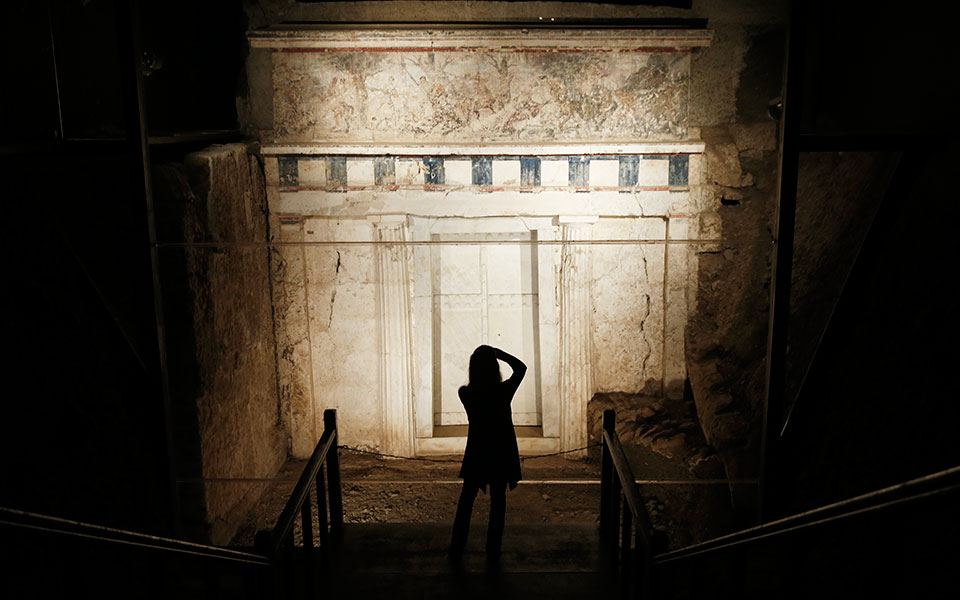
© Petros Giannakouris/AP PHOTO
What ranks Vergina among other world-renowned royal or elite burial sites, including those of Mycenae, Troy and the Egyptian Valley of the Kings, is that, like them, the tombs at Aigai were discovered unlooted and pristine. The excavations by Andronikos, whose name is now as well known in certain circles as Heinrich Schliemann and Howard Carter, revealed a treasure trove of weapons and body armor; jewelry; golden larnakes (ash chests) and oak-leaf diadems; banqueting equipment; luxuriously woven and ornamented burial shrouds; equestrian tack; and the remains of wooden mortuary couches trimmed with ivory, relief-carved human figures, including males whose faces have become iconic Macedonian images, sometimes said to depict Philip II and Alexander the Great themselves.
Territorial Expansion
Vergina/Aigai has become a key piece of cultural evidence in the ongoing state-level and public debate about who the ancient Macedonians were and which land and people today we can accurately call “Macedonian.” Where exactly was ancient Macedonia, and were the Macedonians Greek or something else?
In the time of Philip II, the kingdom’s heartland, represented together by Lower and Upper Macedonia, extended from the Pindus mountains (W) to the Philippi plain (E), and from Mt Olympus (S) to the narrow gorge of the Axios river (now southern FYROM) that cuts between the high ranges of Kaimaktsalan (2524m) and Kerkini (1474-2211m). These mountains formed ancient Macedonia’s natural northern boundary. “Almost ninety percent of its lands,” concludes historian Miltiades Hatzopoulos, “fall within the present-day borders of Greece.”
Already in the 5th century BC, under Alexander I (498-454 BC), more than a dozen tribal regions had been united – an area of some 17,000 square kilometers. This confederation gradually collapsed over time, until Philip II revived it (after 359 BC) and expanded Macedonian hegemony even further. He subjugated additional regions in all cardinal directions, including Paeonia (FYROM) to the north; many mainland areas and islands of Greece to the south; and Thrace to the far east – a vast empire whose total domain by 336 BC, when Philip was assassinated at Aigai, amounted to more than 43,000 square kilometers.
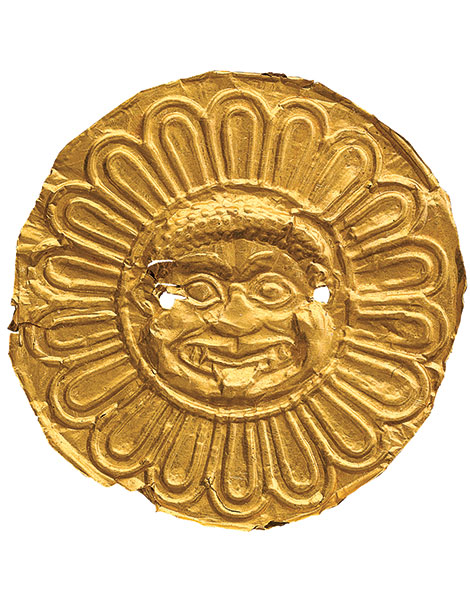
© Hellenic Ministry of Culture & Sports, Ephorate of Antiquities of Imathia.
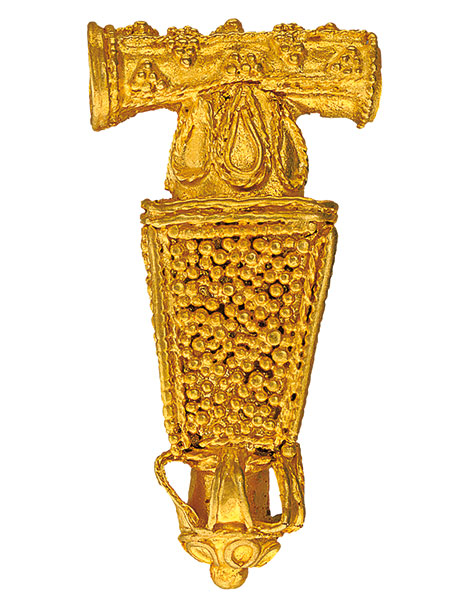
© Hellenic Ministry of Culture & Sports, Ephorate of Antiquities of Imathia.
The Gardens of Midas
The historical sources are clear concerning Macedonian “Greekness” and the location of the original homeland. Herodotus (5th century BC) records an oral tradition from Macedonia which relates that Perdiccas I, Macedonia’s soon-to-be founder, and his two brothers departed the Greek city of Argos (c. 700 BC), traveled briefly north to Illyria and Paeonia, but were not allowed to stay. They consequently returned south to settle “near the Gardens of Midas” in the shadow of “the mountain called Vermion” – adjacent to present-day Veria and (13km SE) Vergina.
Herodotus also tells us that the Macedonian and more northerly Bottiaean “fatherlands” are separated by “the rivers Lydias and Haliacmon, which unite their waters in one stream.” We can thus surmise that ancient Macedonia’s earliest capital lay near Veria and the Aliakmon river. But what was it called?
The origin of the name Aigai, “goat town,” is indicated by Diodorus Siculus (1st century BC), who writes that Perdiccas was advised by Delphi’s Pythian priestess to: “swiftly go … where thou shalt see white-horned goats, with fleece like snow, resting at dawn; make sacrifice … upon that spot, and raise the chief city of a state.”
Later, Diodorus reports, Macedonian kings and queens were buried at “Aigai,” as was the royal custom. In 273 BC, however, its precious tombs suffered widespread desecration: “After Pyrrhus [of Epirus] sacked Aegeae [sic], the seat of the Macedonian royal family, he left his Gauls there. They, learning … in accordance with … ancient custom much wealth was buried with the dead at royal funerals, dug up and broke into all the graves, divided up the treasure, and scattered the bones of the dead.”
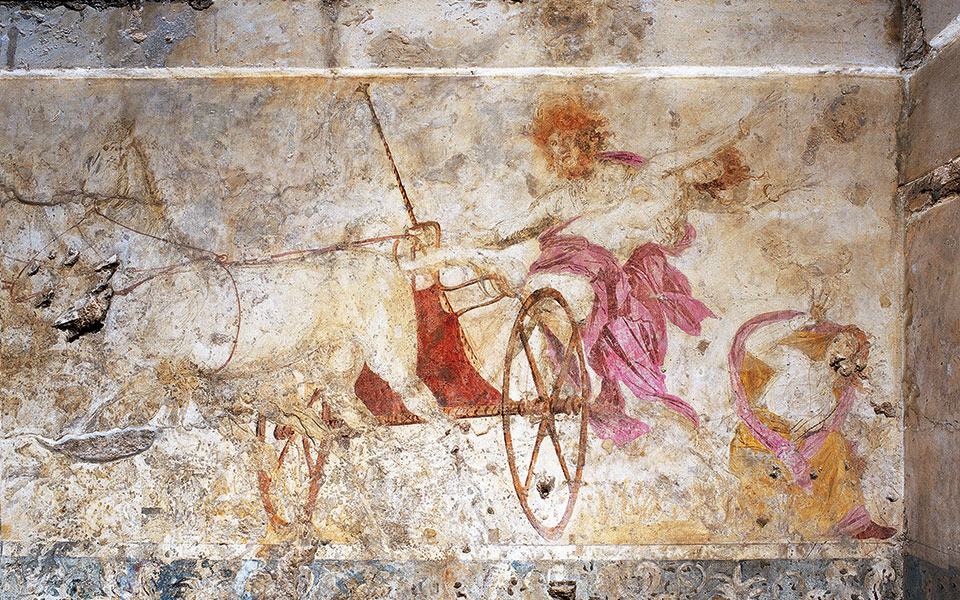
© Hellenic Ministry of Culture & Sports, Ephorate of Antiquities of Imathia. Photo: ANA-MPA
Vergina’s Royal Tombs
Given the frequency of tomb-raiding in antiquity, the pristine condition of Tomb II, as revealed by Andronikos and now on display in the Aigai museum, is all the more impressive. Andronikos, as one of the first information panels in the museum commemorates, quickly felt certain he had unearthed the royal tomb of Philip II. Since then, his archaeological conclusions and legacy have been determinedly defended, scrutinized, augmented with new evidence, in some cases proven accurate, in others still persistently questioned.
Certainly, Vergina is home to ancient Aigai, the most definitive proof being the site’s enormous palace, with ground-floor banqueting rooms and an upper story that may or may not have accommodated a royal residence. The adjacent theater appears to be the exact spot where Philip II was killed by a disgruntled bodyguard in 336 BC while celebrating his daughter’s marriage (Diodorus Siculus 16.91-4).
In the nearby Eucleia sanctuary, a votive statue and two inscribed statue bases dedicated by Eurydice, Philip II’s mother, also indicate royal presence at Vergina/Aigai, as do the marble thrones discovered in the “Eurydice” and Rhomaios Tombs. The city’s massive defensive walls, recently redated in excavations to the era of the post-Alexander king Cassander (c. 315-297 BC), offer another clue to Aigai’s political and strategic importance.
Unlike the near-palace “Eurydice” and Rhomaios tombs, the burials of the Great Tumulus are located downslope at Aigai’s northwestern edge. Among the constellation of much-debated evidence for Tomb II’s association with Philip II, the silver-gilt diadem and unique hand-guard of a torch have been particularly noted. More persuasive is the lion-hunt fresco on the tomb’s facade, depicting an activity reserved exclusively for kings.
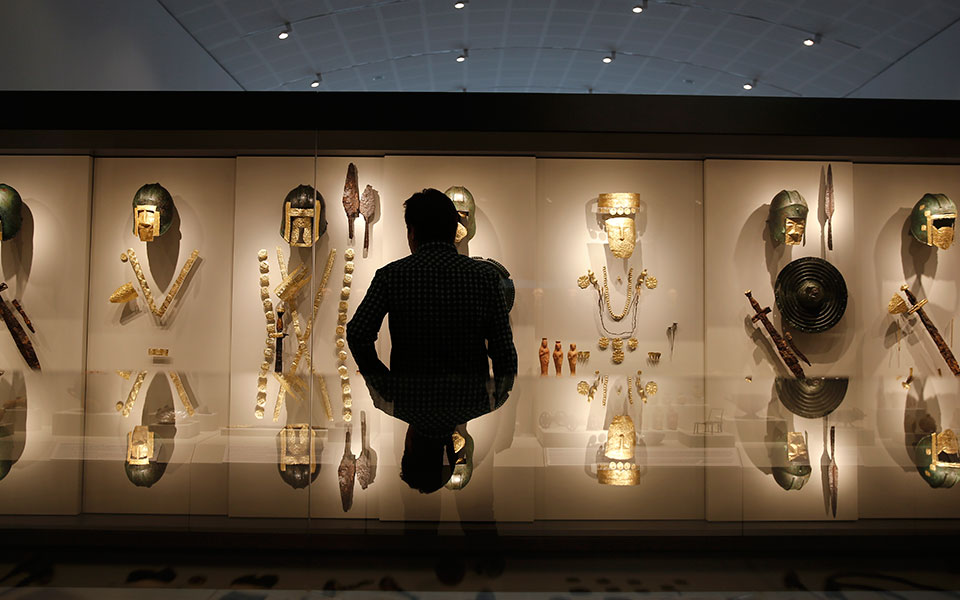
© Hellenic Ministry of Culture & Sports, Ephorate of Antiquities of Imathia. Photo: Petros Giannakouris/AP PHOTO
The king in ancient Macedonia was considered the greater among equals, within a social structure still strongly feudal in character. His Companions (elite guard) and other leading nobles lived, feasted, fought and died in close proximity to him and to each other. Their final resting places also seem close, both in location and style – archaeologically distinguishable perhaps only by key artifacts still not fully understood, or by the happenstances of preservation.
Many clues exist at Vergina, Lefkadia and elsewhere that suggest the material wealth and splendor exhibited by the architecture and grave goods of Tombs II and III were not limited to the Macedonian royal family. Funerary objects of similar luxuriousness as those of Tomb II have been found at other sites, including the non-royal tombs at Derveni (late 4th century BC), attributable to the spoils of Alexander’s conquest of the Persian Empire.
In the end, of this we can be sure: the people of ancient Macedonia were Greeks, speaking and writing in a dialect of Greek, whose heartland lay generally west and south of Thessaloniki and whose earliest capital was Vergina/Aigai.

